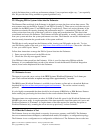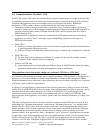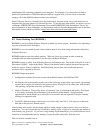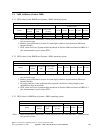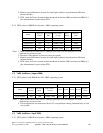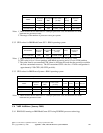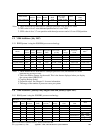
B.1 Performance Data Collection Services
Collecting performance data with Collection Services is an operating system function designed to run
continuously that collects system and job level performance data at regular intervals which can be set
from 15 seconds to 1 hour. It runs a number of collection routines called probes which collect data from
many system resources including jobs, disk units, IOPs, buses, pools, and communication lines.
Collection Services is the replacement for the Performance Monitor function which you may have used in
previous releases to collect performance data by running the STRPFRMON command. Collection
Services has been available in OS/400 since V4R4. The Performance Monitor remained on the system
through V4R5 to allow time to switch over to the new Collection Services function.
How Collection Services works
Collection Services has an improved method for storing the performance data that is collected. A system
object called a management collection object (*MGTCOL) was created in V4R4 to store Collection
Services data. The management collection object takes advantage of teraspace support to make it a more
efficient way to store large quantities of performance data. Collection Services stores the data in a single
collection object and supports a release independent design which allows you to move data to a system at
a different release without requiring database file conversions.
A command called CRTPFRDTA (Create Performance Data) can be used to create the database files from
the contents of the management collection object. The CRTPFRDTA command gives you the flexibility
to generate only the database files you need to analyze a specific situation. If you decide that you always
want to generate the database, you can configure Collection Services to run CRTPFRDTA as a
low-priority batch job while data is being collected. Separating the collection of the data from the
database generation, and running the database function at a lower priority are key reasons why Collection
Services is efficient and can collect data from large quantities of jobs and threads at very frequent
intervals. With Collection Services, you can collect performance data at intervals as frequent as every 15
seconds if you need that level of granularity to diagnose a performance problem. Collection Services also
supports collection intervals of 30 seconds, and 1, 5, 15, 30, and 60 minutes.
The overhead associated with collecting performance data is minimal enough that Collection Services can
run continuously, no matter what workload is being run on your system. If Collection Services is run
continuously as designed, you will capture the data needed to analyze and solve many performance
slowdowns before they turn into a serious problem.
Starting Collection Services
You can start Collection Services by using option 2 on the Performance menu (GO PERFORM), the
Collection Services component of iSeries Navigator, the STRPFRCOL command, or the QYPSSTRC
(Start Collector) API. For more details on these options, see Performance under the Systems
Management topic in the latest version of Information Center which is available at
http://www.ibm.com/eserver/iseries/infocenter
.
When using the Collection Services component of iSeries Navigator, you will find that it gives you
flexibility to collect only the performance data you are interested in. Collection Services data is
organized into over 20 categories and you have the ability to turn on and off each category or select a
IBM i 6.1 Performance Capabilities Reference - January/April/October 2008
© Copyright IBM Corp. 2008 Appendix B - System i Platform Sizing 341




